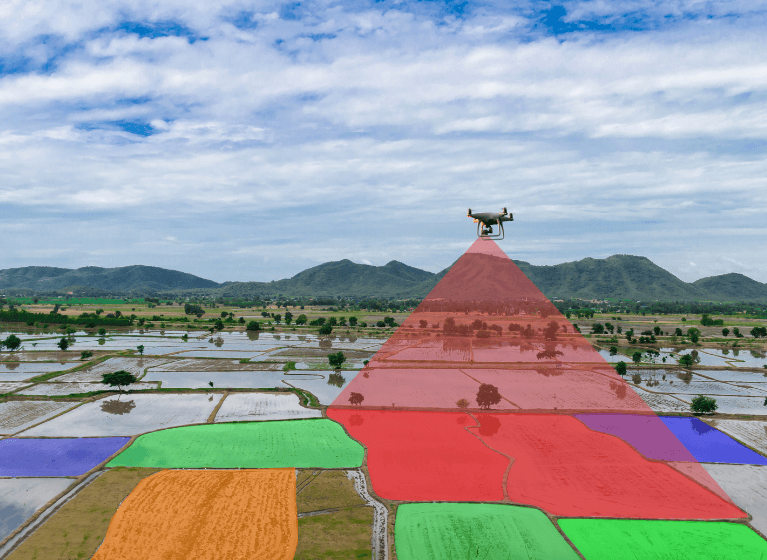Foreign patent protection
Foreign applications
Patents are jurisdictionally based and so to obtain patent protection outside Australia it is necessary to pursue foreign patent applications. This can be achieved by filing patent applications in each individual country or region where patent protection is desired.
Timing of foreign applications
Australia and almost all other countries are members of the Paris Convention, an international agreement that allows foreign patent applications to be deferred for up to 12 months from the date of your initial Australian application, while still retaining the priority date of the initial Australian application. Like Australia, to assess novelty, most countries or regions take into account any publication or use which occurred before the earliest priority date so it usually important to rely on this convention so as to retain the earliest possible priority date for your foreign applications.
A very small number of countries are not members of the Paris convention, and if patent protection in one of these countries is contemplated, this should be discussed with us before there is any publication or non-confidential disclosure of the invention to others, even if an Australian patent application has already been filed.
What if I miss the 12 month deadline?
After the 12 month anniversary of your initial Australian application, it may still be possible to file foreign patent applications—it largely depends on the nature of the use and publication of the invention which has taken place up to that point. A few countries such as the United States and Canada have grace periods which may be relied on, even where full disclosure of the invention has already occurred. Reliance on grace periods is specific to the facts of a particular situation and we can provide advice as necessary.
Regional applications
Some countries are also grouped into regions which permit a single application to be filed and granted as a patent. One example is a European patent application which is examined by the European Patent Office.
Once granted, the patent still has to be validated in the European countries of your choice. This involves assigning an agent in each country and may require translation of claims or the full patent into the relevant national language. Other regional patents include a Eurasian patent for most of the former Soviet states and regional African patents.
In regard to a European patent application a general rule of thumb is that if protection is sought in three or more European countries then the European route is more cost effective than filing separate national applications. A further consideration is that the European route allows deferment of European country choice until after the European patent is granted, which can be useful if more time is required to determine the strategic value of a particular European country.
International application (PCT)
Rather than filing direct national or regional patent applications within 12 months of the filing date of your Australian application, another option for applying for foreign patents is to file a single international patent application at the Australian Patent Office under the provisions of the Patent Cooperation Treaty (PCT). The international application can designate all of the countries and regions that are members of the PCT, referred to as ‘PCT contracting states’. Further details regarding PCT applications can be found at www.wipo.int/pct/en/treaty/about.htm.
If a country of interest is not a member of the PCT, then it will be necessary to file a separate application in that country. This applies in particular to some Latin American and Middle Eastern countries. We can provide further information about non-PCT contracting countries.
It is important to note that an international application will not result in an international patent. The international patent application merely provides a mechanism for preserving your rights in a large number of countries or regions for a limited period, at the end of which it will still be necessary to file national and/or regional applications in the countries or regions of interest to you. This filing of national or regional applications is called ‘national phase entry’ or ‘regional phase entry’.
International application process
An international application is usually filed before the 12 month anniversary of the initial Australian application to retain the priority date under the Paris Convention. The international application reserves your rights in a large number of countries for an additional 18 months approximately, (30 months from the initial Australian application in total). Thus the relatively high cost of foreign applications can be deferred for an additional 18 months. The PCT route is also advantageous if you are not yet certain as to which countries or regions you ultimately wish to pursue patent protection.
As with an Australian complete application, an international application is published approximately 18 months from the initial Australian application. Other advantages in filing an international application include an international search which is conducted automatically, as well as the opportunity to amend the application to take account of any relevant prior art that is found by the search. For instance, if relevant prior art comes to light then the international application can be amended instead of having to amend a number of national applications in a like manner. Amendments can be made within two months of the international search report or during optional international preliminary examination.
The preliminary examination procedure does not remove the requirement for examination of the individual national phase applications before the respective national patent offices. However, often such national examinations can often be streamlined and be less costly if patentability issues are dealt with during the life of the international application. We can provide advice as to the best course of action in a particular situation.
In general, the choice between the PCT route and direct national route should take into account a number of factors, including timing of costs, ultimate country choice, and commercial goals.
Where should I file foreign patent applications?
Pursuing foreign patent applications is expensive, therefore decisions about where to seek patent protection should be made carefully and should take into account your long term commercial strategy. In general, a patent can be used to stop others from manufacturing, using or selling your invention in the country for which it is granted. So you should consider protecting markets and/or places of manufacture. For instance, if you believe that the product should sell well in the United States, United Kingdom, France and Germany, then you should consider filing patent applications in each of those countries (or instead the United States and a European regional application) to stop others from selling your invention in those countries. On the other hand, you can file patent applications in manufacturing countries to stop others from manufacturing the invention in those countries, for example China and South Korea.
We can provide strategic advice about securing patent protection in foreign countries based on your commercial goals.
Examination before national patent offices
Examination of foreign patent applications usually follows a similar procedure as that for Australia, however time frames vary dramatically from country to country. Some countries automatically examine applications after filing, whereas others require a separate examination request to be made by some later date. Timing will also be dependent on the backlog of applications at a particular national patent office.
Many foreign patent systems have provisions for accelerating or decelerating examination and we can provide advice in relation to particular countries or regions.
In each case, our foreign patent agents forward the examination reports to us. We send these on to you, usually with recommendations as to how we can overcome any objections raised. Because we have prepared the application, we are usually in the best position to give advice as to how to overcome relevant prior art, in consultation with you. Our foreign patent agents are best placed to advise us on peculiarities of foreign law and to meet the different formality requirements of foreign patent offices.
Cost of foreign patent applications
When selecting foreign countries for national protection, you should also budget for downstream costs for examination and renewal fees. As a rule of thumb, for each country you should budget downstream examination costs as being at least as much as the initial filing cost for that country. Further, renewal fees are typically due annually and for some countries these begin shortly after filing, whereas for others they do not begin until after a patent is granted.
Foreign design protection
There are similar systems for protecting designs in many other countries. In most countries, an application made within six months of an Australian application can use the Australian filing date. Or, if a foreign application is made first, an Australian application made within six months can use the foreign filing date.
The designs system is less harmonised that the patent system and it is therefore useful to create a priority application that takes into consideration the idiosyncrasies of the other countries where protection is ultimately to be pursued. Our attorneys regularly handle advice on overseas design filing for local clients and help to maximise the scope of protection.


